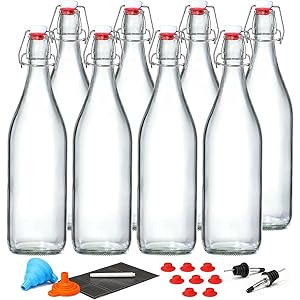Understanding Dry Hopping
Dry hopping is a crucial technique in the brewing process, particularly for those who wish to enhance the aroma and flavor profile of their beer. This method involves adding hops to the beer after the boiling stage, allowing for the extraction of essential oils without contributing to bitterness. The question of how much dry hop per litre is essential for brewers aiming to achieve the desired hop character in their final product.
Factors Influencing Dry Hop Quantity
The amount of dry hops to use per litre can vary significantly based on several factors, including the type of hops, the style of beer being brewed, and the desired aroma intensity. For instance, aromatic hops like Cascade or Citra may require different quantities compared to bittering hops. Additionally, the brewing style—whether it’s an IPA, pale ale, or lager—will dictate the hop levels needed to achieve the desired flavor profile.
General Guidelines for Dry Hopping
As a general guideline, many brewers recommend using between 50 to 100 grams of dry hops per litre of beer. This range can provide a robust hop aroma without overwhelming the palate. However, some brewers may choose to go beyond this range, especially in hop-forward styles like double IPAs, where upwards of 200 grams per litre is not uncommon.
Timing of Dry Hopping
The timing of when to add dry hops can also affect the perceived aroma and flavor. Adding hops during fermentation, known as “hop bursting,” can yield different results than adding them during conditioning. Typically, dry hopping is done 3 to 7 days before packaging, allowing the hops to infuse their character into the beer while minimizing the risk of grassy flavors.
Experimentation with Dry Hopping
Brewing is as much an art as it is a science, and experimentation is key to finding the perfect balance of hop flavor. Brewers are encouraged to start within the recommended range of dry hops per litre and adjust based on personal taste preferences and feedback from others. Keeping detailed notes on each batch can help refine the process over time.
Get more content like this!
Sign up to receive updates and new terms first hand.
Common Mistakes in Dry Hopping
One common mistake brewers make is using too much dry hop, leading to overpowering flavors that can mask the malt backbone of the beer. It’s essential to strike a balance between hop aroma and the overall flavor profile. Additionally, using hops that are too old or improperly stored can result in diminished aroma and flavor, so freshness is vital.
Understanding Hop Varieties
Different hop varieties possess unique characteristics that can significantly impact the final product. For example, Cascade hops are known for their floral and citrus notes, making them a popular choice for American pale ales. Understanding the specific attributes of each hop variety can help brewers determine the appropriate amount to use per litre.
Measuring Dry Hops Accurately
Accurate measurement of dry hops is crucial for consistency in brewing. Using a kitchen scale or a dedicated brewing scale can help ensure that the right amount is added to each batch. Additionally, brewers should consider the form of hops being used—whole leaf, pellets, or extracts—as this can affect the volume needed for the desired hop character.
Impact of Dry Hopping on Beer Clarity
While dry hopping enhances aroma and flavor, it can also impact the clarity of the beer. The addition of hops can lead to increased haze, particularly if large quantities are used. Brewers should consider the trade-off between hop character and clarity, especially for styles that are typically clear, such as lagers.
Final Thoughts on Dry Hopping
Ultimately, the question of how much dry hop per litre is subjective and varies from brewer to brewer. By understanding the factors that influence dry hopping and experimenting with different quantities and varieties, brewers can create unique and flavorful beers that stand out in a crowded market. The key is to find the right balance that suits both the style of beer and personal taste preferences.




